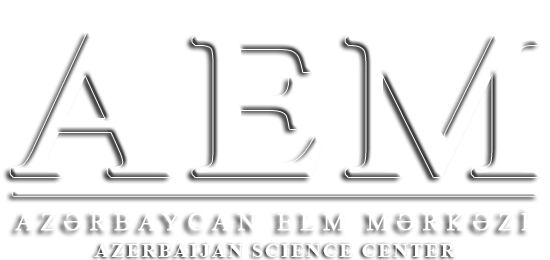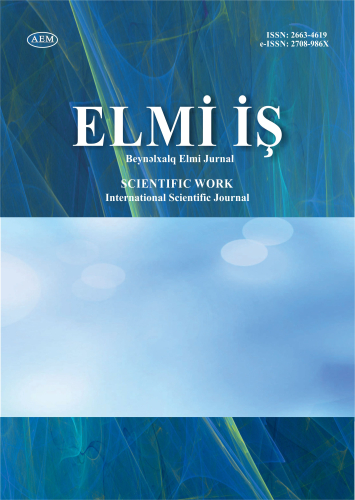DOI: https://doi.org/10.36719/2663-4619/100/38-53
Fatma xanım Bunyatova
İdrak məktəbi
fatmaxanum@rambler.ru
BÜNYATOVANIN UNİVERSAL TAQLARI İLƏ TƏBİİ AZƏRBAYCAN DİLİNİN
EMALI VƏ SÜNİ DİLƏ ÇEVRİLMƏSİ
Xülasə
Bu məqalədə təbii Azərbaycan dilinin morfoloji cəhətdən universal taqlarla təbii və süni emalından bəhs edilir. Məqalə dörd hissədən: giriş, əsas hissə, müqayisə və nəticədən ibarətdir. Giriş hissəsində NLP inkişafının vacibliyindən, ingilis, rus və Azərbaycan dillərinin milli korpuslarının yaradılmasında istifadə edilən taqlara nəzər salınlr. Bu taqlara alternativ olaraq Bunyatovanın yeni "x1-xn və y1-yn" "x0,1-xn və y0,1-y0,n" universal taqlarının hansı zərurətdən necə və nə cür yaradılması və harada tətbiq edilməsi haqqında qısa məlumat verilmişdi. Əsas hissə 3 bölümdən ibarətdir.1. Azərbaycan dilini morfoloji səviyyədə universal x və y taqlarla taqlanmasının metodologiyası. Bu bölümdə Azərbaycan dilinin qaydalarının təsnifatı və onlara taq (kod, işarə) verilməsində Bunyatovanın universal taqlarından necə istifadə edİməsi göstərilir. Universal taqlar rəqəmlərlə indeksləndirilmiş iki riyazi işarələrindən – x və y- dən ibarətdi. 2. İsveç gsixoloqu J, Piajenin idrak nəzəriyyəsinin anlamlarına əsaslanaraq Azərbaycan dilinin tamlıq modeli (ADTM) -təbii dil modeli qurulmuşdu. Bu modeldə x1-x11-lə dilin invariantı (sözün lüğət forması, kökü) , y1-y8 –lə dilin dəyişəni (şəkilçiləri)-kateqoriyası göstərilmişdi.
Azərbaycan dilinin tamlıq modelinə əsasan Lütfü –Zadənin qeyri səlis məntiqinin alətləri ilə Azərbaycan dilinin tamlıq və qeyri səlis modeli (süni dil modeli) (ADTvəQSM) yaradılmışdı. Bu modeldə x0,1-x1,1-lə dilin invariantı (sözün lüğət forması, kökü), y0,1-y0,8 –lə dilin dəyişəni (şəkilçiləri)-kateqoriyası göstərilmişdi. 3 Hissədə natural və süni Azərbaycan dilinin morfoloji qaydalarının dilin təbii və süni modelində taq edilməsi, 11 nitq hissələrinin emalının nümunələri və dil trafaretlərinin nəyə xidmət etdiyi göstərilmişdi.
3-cü hissədə ADTvəQSM-nin qaydalarının taq edilməsinin nəticələri Azərbaycan ingilis və rus dillərinin morfoloji emalında istifadə edilən taqlarla müqayisə edilir. Dördüncü hissə universal taqlardan harada istifadə edilməsindən və onun əsasında yeni kompüter texnologiyalarının yaradılması barəsində bəhs edilir..
Açar sözlər: NLP, universal taqlar, dil korpusları, təbii və süni dil, modelləşdirmə, qaydalı trafaretlər
Fatma khanim Bunyatova
“Intellect School”
fatmaxanum@ram
Natural Azerbaijani language with Bunyatova's universal tags processing and
conversion to artificial language
Abstract
This article deals with the natural and artificial processing of the natural Azerbaijani language with morphologically universal tags. The article consists of four parts: introduction, main part, comparison, and conclusion. In the introductory part, the importance of NLP development and the frameworks used in the creation of national corpora of English, Russian, and Azerbaijani languages are reviewed. As an alternative to these tags, Bunyatova's new "x1-xn and y1-yn" "x0,1-xn and y0,1-y0,n" universal tags were given a brief description of how and where to apply them. The main part consists of 3 parts. The methodology of tagging the Azerbaijani language at the morphological level with universal x and y tags. In this section, it is shown how Bunyatova's universal tags are used in classifying the rules of the Azerbaijani language and assigning tags (codes,signs) to them. Universal tags consisted of two mathematical symbols - x and y - indexed with numbers.
The integrity model of the Azerbaijani language (IMAL) - a natural language model - was built based on the meanings of the cognitive theory of the Swedish psychologist J. Piaget. In this model, x1-x11 indicated the invariant of the language (the dictionary form, root of the word), and y1-y8 indicated the variable (figures)-category of the language.
Based on the completeness model of the Azerbaijani language, the completeness and fuzzy model (artificial language model) of the Azerbaijani language (I & FMAL) was created with the tools of Lutfu-Zade's fuzzy logic. In this model, x0,1-x1,1 indicated the invariant of the language (the dictionary form, root of the word), and y0.1-y0.8 indicated the variable (images)-category of the language. The morphological rules of the natural and artificial Azerbaijani language were attached to the natural and artificial model of the language, and examples of the processing of 11 parts of speech, and the purpose of language stencils were shown.
The results of tagging the rules of (I&FMAL) are compared with the tags used in the morphological processing of English and Russian languages.
This part talks about where universal arches are used and the creation of new computer technologies based on them.
Keywords: NLP, universal tags, language corpora, natural and artificial language, modeling, rules stencils

